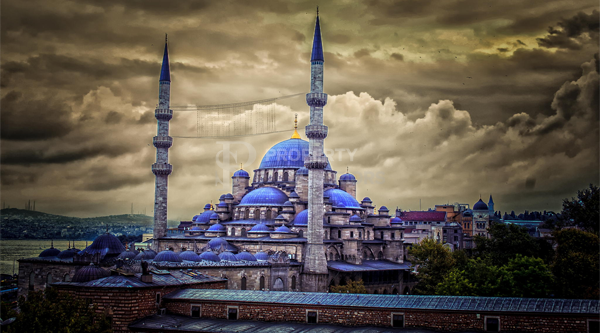
The Blue Mosque in Istanbul, also known as the Sultanahmet Mosque or the Sultanahmet Mosque, is the most famous royal mosque in the Ottoman Empire. Located opposite the Hagia Sophia in the Sultanahmet district of Istanbul, the Blue Mosque receives thousands of curious tourists and Muslims who come to worship every day.
One of the city's mosques, the Blue Mosque offers an insight into Islam in modern-day Istanbul. How Istanbulites are true to their faith and how places of worship reflect everyday life. But mostly of prestige and of interest around the world, the Imperial Mosque is one of the last classic Ottoman buildings.
There are many Ottoman mosques throughout Istanbul and Turkey, but the architectural style is no longer in use. Towards the end of their rule, the Ottomans began using more Western architectural styles. Thus, the mosque reflects an important era in the history books and certainly the timeline of Istanbul and Turkey. The Sultan Ahmed Mosque will amaze any visitor, perfectly representing traditional Islamic architecture.
1: The Ottoman Sultans and Their Mosques
The Ottoman sultans commissioned the construction of a long chain of mosques in Istanbul and Turkey. For the sultans, the construction of the mosque left their mark and cemented their place in the history books of the Ottoman Empire. However, there are strict protocols. First, when a sultan commissioned the construction of a mosque, he had to use his funds, not the treasury. Second, he had to win a battle or war against the heretics.
Therefore, you will not find any mosques built in the name of Murad III or Selim II. They never fought and had no spoils to fund construction. Well, here's the Blue Mosque causing controversy. The Ottoman Sultan Ahmed I wanted to build a mosque in Istanbul. Unfortunately, the young sultan ascended the throne when he was only 13 years old. In addition to the strife within the empire, the Ottomans also ceded land to the Persians.
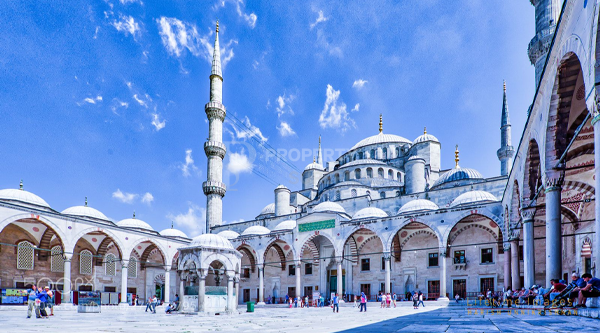
Afraid of being seen as a weak sultan, Ahmed I knew his advisors would not approve of construction, but Ahmed focused on his legacy rather than worrying about current events. Thus, in 1609, the construction of the Sultan Ahmed Mosque began. But there are conditions. Ahmed, I hope his Istanbul Mosque is bigger and better than Hagia Sophia and Suleymaniye Mosque. He wanted the largest mosque in the entire Ottoman Empire.
2: Architect of the Blue Mosque
The architect chosen by Sultan Ahmed was Sedefkar Mehmed Aga. As a teenager, he first studied music, but then turned to architecture. He completed his apprenticeship with Mimar Sinan, the great architect of the Ottoman royal residence. Known throughout history and the Ottoman Empire for his eye-catching designs, Mimar Sinan imparted much of his knowledge to the learned Sedefkar Mehmed Aga. In 1599, Sedefkar Mehmed Aga received the title and position of Official Architect of the Ottoman Empire. While he was less influential than Mimar Sinan, the Sultan Ahmed Mosque in Istanbul is his legacy.
3: Build the Blue Mosque
Following Sultan Ahmed's instructions to build bigger and better mosques, Mehmet Agha followed the architecture of the Ottoman mosques but designed a building with eight secondary domes. The architectural aspect that causes problems are the six pencil-shaped minarets. The only mosque with six minarets is the Masjid Mosque in Mecca. Was Ahmed trying to challenge Mecca?
This is a misunderstanding. When his architect heard "six minarets," Ahmed was referring to the golden minarets. To make up for the mishap, Ahmed ordered the addition of a seventh minaret to the Mecca mosque so that its six minarets would stand. Today, the corners and courtyard of the Blue Mosque are flanked by six slender, towering minarets.
The courtyard is also an important feature, and a chain hangs over the royal entrance. Only the Ottoman sultans used it, and the chain forced them to bow their heads when riding past. Another reminder that no one is greater than Allah.
4: Interior walls and design of the Sultan Ahmed Mosque
The interior design is spectacular. More than 20,000 blue tiles from Iznik cover the interior walls of the mosque. The name Iznik is only associated with the best and finest tiles in Turkey, and the blue tiles lend weight to the moniker; the Blue Mosque. Everyone will notice the indoor rugs in mosques all over Turkey. They remain immaculate despite receiving hundreds of devotees and tourists every day. The mihrab facing Mecca and the Qibla wall are important aspects of any mosque. Carved marble accentuates this and stands next to the miner where the imam stands.
The prayer halls of mosques are designed to ensure that the imam's voice is heard by everyone, regardless of size. At the southeast corner, ten marble columns support the royal pavilion from which the Ottoman sultan overlooks the prayer hall. Architect Mehmet Agha, in building the Ottoman royal residence, followed his master's advice that everything should be big and grand, and did not fail.
5: How tall is the central dome of the Blue Mosque?
The central dome of the Blue Mosque is 73 meters wide and 43 meters high. The dominant central dome has 28 stained glass windows, while the corner domes each have 14. The dome of the Blue Mosque was originally designed to dazzle the dome of the Hagia Sophia, once the most important dome in the world, its breathtaking dome is a landmark of Istanbul.
6: Visit the Sultan Ahmed Mosque
The Blue Mosque faces the Hagia Sophia and the Byzantine Hippodrome in Sultanahmet Square, an area known as the Old City of Istanbul and a UNESCO World Heritage Site. Avoid visiting during prayers as Istanbul Mosques are closed for 90 minutes. Please take off your shoes when entering the prayer hall entrance. Women should wear hats and conservative clothing that covers upper arms, legs, cleavage, and upper body. Likewise, men should wear long trousers and sleeved shirts. Remember, this is an official place of worship in Istanbul, so even if visiting outside of prayer times, it should be quiet.
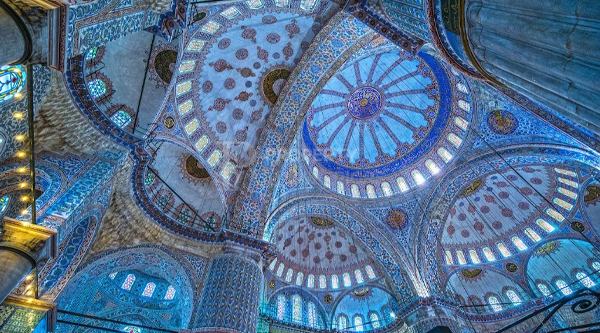
7: Visit another royal mosque in Istanbul
The Ottoman architecture of the Suleymaniye Mosque is less well-known than the Blue Mosque, but it still ranks high in importance in Istanbul. The mosque houses the tombs of Sultan Suleiman the Magnificent and his wife Hürrem, the most powerful women in the Imperial City and the Ottoman Empire. The Yeni Valide Mosque in Istanbul's Eminonu district is known for its front square and flanking steps leading to the entrance. You can combine a visit to this Istanbul mosque with a visit to the Egyptian bazaar. Other majestic Ottoman mosques in Istanbul include Mihrimah Sultan, Sultan Beyazit, the Fatih Mosque of the Conqueror and the Great Mecidiye in Ortakoy, which feature prominently on Bosphorus postcards.
Other Attractions in Istanbul
Places of interest near the Blue Mosque: While the Blue Mosque is an impressive building representing the former imperial city of Istanbul, there are many other historical sites. You can see them on a day trip; however, we recommend taking your time and enjoying two days. Just around the corner from Hagia Sophia and the Blue Mosque, Topkapi Palace was the first residence and government center of the Ottoman Empire.
Grand Bazaar: From a royal place of worship to a shopping wonder, Istanbul's Grand Bazaar is another landmark of Ottoman rule that still stands today. Known as Turkey's largest shopping market, the maze of alleys and storefronts is a joy to explore and buy souvenirs when visiting Istanbul.
Notable Buildings: Istanbul is home to hundreds of buildings of religious, cultural or architectural splendor. From Europe to Asia, some appear on postcards, while others remain little known and become a secret. In any case, all of these are ideal additions after visiting the Blue Mosque in Istanbul.
Related posts:
The Turkish official gazette published on Tuesday, December 12, a Republican decision issued by the presidency of the Republic of Turkey and Turkish President "Recep Tayyip Erdogan" and bearing the number 32397 regarding making some amendments to the conditions for...
The first day of last September witnessed the implementation of a new law imposing financial fines on real estate owners who impose exorbitant rents on tenants in Turkey, as disputes in recent years between landlords and tenants of real estate...


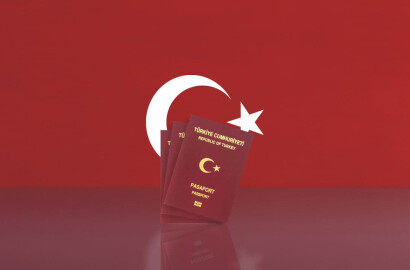

 New provisions for obtaining Turkish citizenship through real estate ownership
New provisions for obtaining Turkish citizenship through real estate ownership
 Turkish Real Estate Rental Law 2024
Turkish Real Estate Rental Law 2024
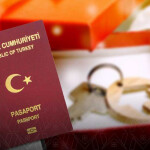 Ways to obtain Turkish citizenship through investment 2024
Ways to obtain Turkish citizenship through investment 2024
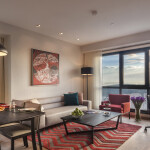 How to choose an ideal apartment in Turkiye?
How to choose an ideal apartment in Turkiye?
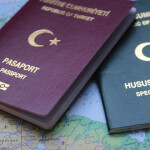 Turkish passport... Extraction method and fees 2024
Turkish passport... Extraction method and fees 2024
